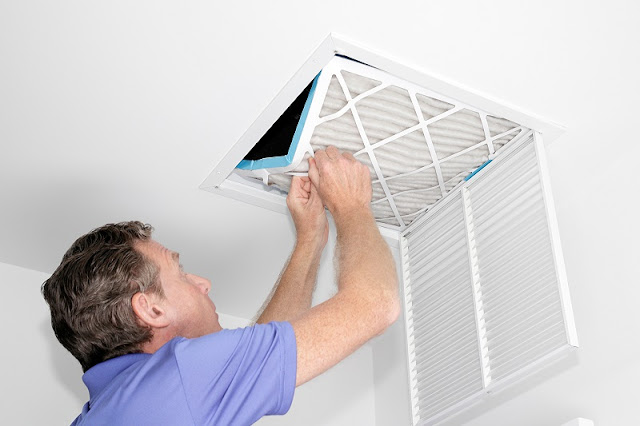A ducting link called a Return air grille enables air to return to a heating and cooling system. Such an air grille is generally protected with grillwork that performs a variety of tasks. People can use coverings for these apertures that are produced by a range of companies to replace existing covers or to install with a brand-new system. Along with ducting system makers, these products are also sold through catalogues, hardware stores, and contractors.
A register that permits air to enter the heating and cooling system is covered by the return air grille. Since most grills can be adjusted, individuals can close off a room and prevent the furnace from drawing air out of it.
Location For Installation Of Return Grilles
The Return air grille is the air intake grille for the ducted unit via which air from the building is drawn into the ducted system and sent to the indoor fan unit for conditioning before being returned to the rooms as conditioned air. In household installations, return air grilles typically have a filter fitted.
Return air grilles are typically installed in the following places:
- When the supply air outlets or vent are ceiling mounted, typically in the ceiling
- When indoor units are installed under the floor or in a plant room, they are frequently installed lower on the wall than those that are attached to the ceiling.
- Outlet vents, where both the supply and return air ducts might be attached to the same linear grille.
- There may not be any return air vents in some circumstances, but the return air filters will still be attached directly to the rear of the appliance.
 |
| Return Air Grille |
Your Return air grille ducted systems have return air filters installed to lessen or prevent the accumulation of dust or debris on the fans or coils of the interior unit. A filter in a vent is simpler to maintain than the unit's coil, which must be accessed and cleaned.
To prevent tiny particle pollutants from entering the ductwork, return air grilles are frequently equipped with filters. This lessens the amount of cleaning required, maintains the system operating efficiently, and lowers the possibility of clogs brought on by dust, pet hair, and other debris.
Depending on the system, a return vent could be placed on the floor or the wall. To prevent dirt from entering the heating and cooling system, it is crucial to ensure that return vents are covered for safety and that the Return air grille is frequently lifted and cleaned along with the filter. Anyone who is unsure of how to accomplish this can seek assistance from a heating and cooling specialist on how to maintain their ductwork to increase the lifespan of their climate control system.
The duct aperture where the air is drawn back to the fan is covered by the return air (RA) grill. You will find this in a room, hallway, or other busy area of your building. Because the temperature of the air returning to the fan provides a good indication of whether the room or zone needs more or less heat, the RA grills are frequently placed close to the thermostat (in the winter). There is frequently just one sizable RA grill available for a number of rooms. Although it would be wonderful to have one in each room, this is frequently not the case due to expense.
Put some paper on it and check whether it sticks to see if it is a Return air grille. Once found, you can determine how the air is moving through a room. Forcefully pushed in, the air eventually makes its way back to the RA grill. You cannot rely on the RA grill to sufficiently reduce the amount of aerosolized particles if it is located far away in a corridor.
Additionally, since the particles will not be able to reach the air handling unit's filter, its effectiveness loses significance. If there are multiple inhabitants in the space at this time, you should consider offering a portable HEPA or UV-C filter that is perfectly placed in between them.
Conclusion
Considering the above points and information, it must be clear to your by now that any instance, it would be really foolish to overlook the issues of malfunctioning HVAC systems. The chances of having problems with the return air grille systems are the most and hence, ignoring the situations can only worsen he problems. Now that you know every bit of info about these systems, it is advisable to go for checkups of the air grille parts once in every three months all throughout the year to ensure longevity of the electronic appliances.






0 comments:
Post a Comment